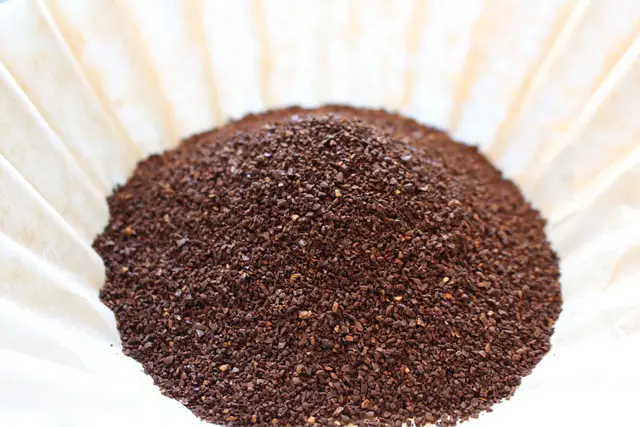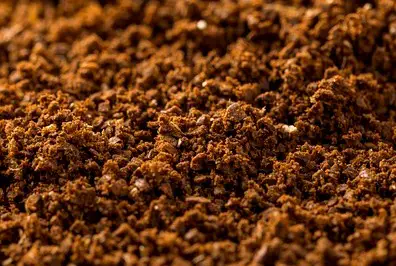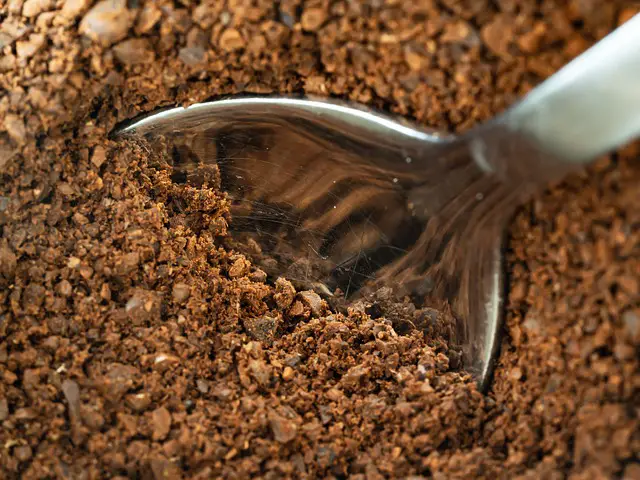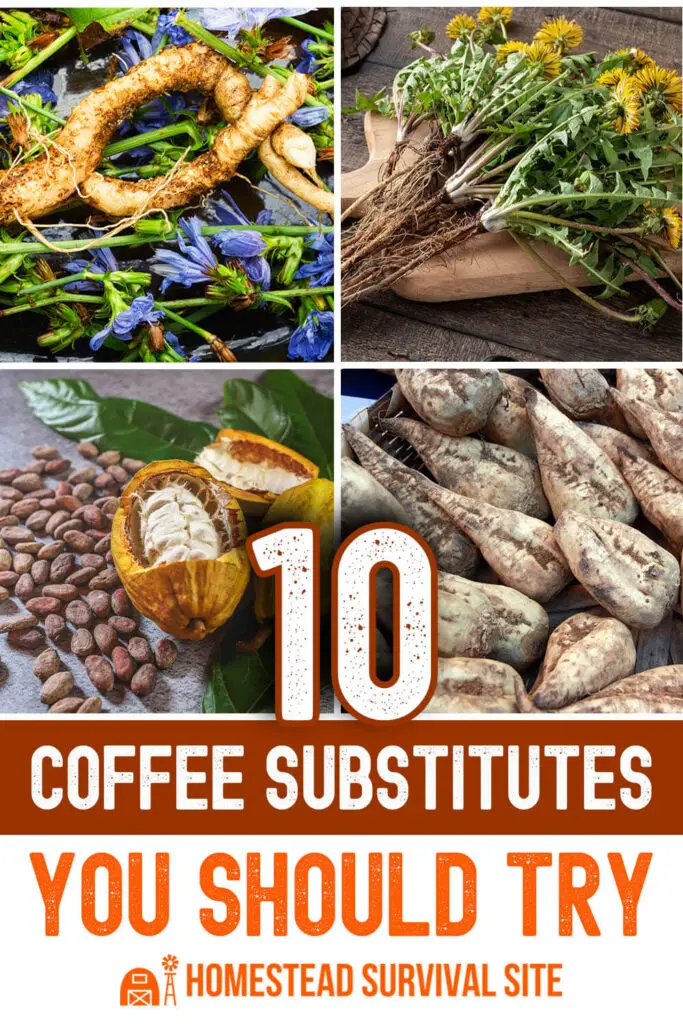Estimated reading time: 15 minutes
Coffee has its origins in the ancient coffee forests of Ethiopia and it soon spread to the Middle East and eventually to Central and South America. The coffee tree is a tropical plant and the popularity of coffee grew across Europe and into the new world
Today, coffee is one of the world’s largest exported commodities second only to oil. Every culture around the world still features coffee shops as a place to gather, relax and of course drink coffee.
Want to save this post for later? Click Here to Pin It On Pinterest!
The Move to Coffee Substitutes
There were a few factors that led to the development of coffee substitutes. One was its availability. At times when coffee was unavailable or simply too expensive people turned to alternatives sources to recreate the appearance, taste and experience of coffee.
Another factor that motivated people to look for coffee substitutes was the affects of caffeine. Some people didn’t want the stimulant effect of caffeine while others turned away from caffeine for health reasons. The result was an ongoing search for the perfect substitute although that perfection continues to be a matter of personal taste.
Two Approaches to Coffee Substitutes
To be clear, when we refer to a coffee substitute we’re not referring to things like tea that are also consumed hot and in a cup. This is about finding or buying the things that make something look and taste like coffee.
One approach is to forage or grow your own alternatives, and the other is to buy one of the old or new prepared commercial formulations.
On a fundamental level all of these substitutes are derived from the seeds, fruits, root or stems of plants. And while mushrooms are not technically plants, many coffee substitutes also use dried and roasted mushrooms as an ingredient. Few leaves have made the cut as a coffee substitute and typically fall into the category of teas.
Roasting is the Key
What makes the beans or seeds from a coffee tree distinctive is a roasting process that caramelizes the beans to a dark brown color. This roasting not only gives coffee its unique color, but concentrates many of the chemical elements in the bean to give coffee its flavor.
What’s important to note is that all of the coffee substitutes we’ll cover are also roasted to attain the brown coffee color, and impart some of the roasted flavor notes that define the taste of coffee.
The chemistry and physics of roasting for coffee beans and coffee substitutes is complex, but it essentially leads to major chemical reactions known as a “Maillard” reaction that creates volatile but edible compounds like furans, ketones, pyrazines and aldehydes. All and each of them define the coffee flavor from roasting.
Roasting Approaches
√ Oven
An oven is the easiest way to roast any root, stem, bean or seed as a first step towards making a coffee alternative. The temperature typically recommended is 350 degrees Fahrenheit and the time varies depending on the source material and its size.
In most instances, the root, seed or bean, fruit or stem is roasted whole until browned and then ground to the desired consistency.
√ Open Fire
Open fire roasting can be used when an oven is not available. It’s also a good alternative if you don’t want your kitchen filled the smell of browning roots or anything else you may be using for your coffee substitute. What’s important is that anything you roast over an open fire be exposed to indirect heat. Place anything you are trying to roast off to the side where the heat from the fire can roast but not burn your roots or other source material.
If roasting beans or seed over an open fire it’s best to roast them in a metal pan or pot and stir around often. Here again, you want browning not burning. Continue to roast over the fire until roasted to a deep brown color.
√ Covered grill (kettle grill)
Cooking in a kettle grill is more forgiving than an open fire but you should still use an indirect heat method. Anything you are trying to roast should also be in a metal or clay pan or pot. Check it from time to time and stir around until browned.
√ Coffee Bean Roaster
A Coffee bean roaster can be used for other types of bean and seeds and is fairly maintenance free during roasting. They don’t work as well for roots and fruits but are perfect for other types of seeds and beans.
As we continue to go through coffee alternatives we’ll include various recipes and processes but roasting will usually be a first step to making a coffee substitute. We’re going to start with plant substitutes you can grow or forage yourself, and then we’ll cover how combinations of various plant sources can be made and some of the coffee substitute products that have resulted.
Grinding Your Experimental Coffee
There are a few ways to do this. In the end the type of grinder is less important than the size and characteristics of the grind. Traditional coffee beans are ground to the consistency of fine, sand granules.
That can work for most coffee alternatives but some brew better if reduced to a powder like consistency, while others should be reduced to larger, chunkier grains. Here are some general guidelines for common recommended grinds for various coffee alternatives: Ultimately you may need to experiment a bit to get the best results.
| GRIND | TEXTURE | SOURCE | BREWING | NOTES |
|---|---|---|---|---|
| FINE POWDER |  | Mushrooms Barley Wheat Rye Lupine beans | French press and steeping with fine filters or dissolved | Use of filters is best to remove any residue |
| ESPRESSO GRIND |  | Sugar Beets Acorns All other seeds | French press | French press or espresso machine works best |
| TRADITIONAL GRIND |  | Cacao Beans Most other garden vegetables | All brewing methods | Any method for grinding and brewing |
| COARSE GRIND |  | Chicory root | All brewing methods | Sometimes require long steeping |
| VERY COARSE GRIND |  | Dandelion root | French Press and steeping best brewing methods | Sometimes require double brewing to extract full flavor |
| GROUND CHUNK |  | Oak bark cambium Figs, and fruits of Blackthorn and Hawthorn | Steeping or slow boiling | 10 minutes sometimes required to extract full flavor |
Some Notes on Brewing
Most of us are familiar with the coffee brewing process and a coffee maker is a standard appliance on any kitchen counter. One thing to keep in mind is that while some alternative coffee recipes can work in a traditional coffee maker, others do better with slow steeping like you would do with a tea, or the use of a French coffee press to use hot water under pressure to drive the flavor out of the roast.
Here are some of the brewing possibilities and the coffee substitutes that get the best result with each type of brewing mechanism:
- Traditional Coffee Maker
- French Press
- Steeping
- Slow Drip
Alternative Coffee Recipes
1. Chicory Root
Chicory was one of the first coffee substitutes used across many cultures to create a coffee substitute. It’s often referred to as the best, natural coffee alternative. The root of the plant is harvested, washed, dried and then chopped before roasting.
Here’s the recipe that has been used for centuries:
Chicory Root Coffee
- Harvest a handful of chicory roots and cut off the stems and leaves from the roots.
- Wash and scrub the roots under running water until all dirt and sand is rinsed away.
- Roast the whole roots on a baking sheet until browned. If you have particularly large roots you may want to cut them lengthwise to make sure they brown all the way through. Roast for 40 minutes to an hour turning halfway through the roasting time. Roast until a dark brown color.
- Grind the browned roots in a food processor, coffee grinder, or blender. You want a coarse grind resulting in small bits and chunks of chicory root.
- Brew your chicory root coffee the same way you would brew traditional coffee either in a coffee maker, French press or steeped like loose tea. Figure on using a cup of roasted chicory root to make an 8-cup pot of coffee or 2 tablespoons to steep one cup. Add more or less to suit your taste.
2. Dandelion Root
If you’ve done any wild foraging you’re aware of the amazing range of benefits from foraging dandelions for food. What’s great about dandelions is they’re everywhere. What’s better about dandelion is that their roots make for a very good coffee substitute. Once again, roasting is key to unlocking the appearance and taste of coffee.
Here’s one of the standard recipes that keeps showing up:
Dandelion Root Coffee
- Collect a pile of dandelion roots.
- Cut off the leaves and wash and rinse the dandelions until all dirt is removed.
- Roast the whole dandelion roots on a baking sheet in a 350 degree oven for about 40 minutes or until deeply browned. You might want turn them once after 20 minutes.
- Grind in a food processor, coffee grinder or you could even use a mortar and pestle. Grind to a very coarse grind.
- Dandelion root coffee is best when boiled. Drop a cup of the roasted and ground roots into 4 cups of boiling water and boil for about 3 minutes and then let steep for 5 minutes.
- Taste and determine if you should add more or less of the dandelion roots in the future.
3. Cacao Beans
Cacao is the primary ingredients in the manufacture of chocolate. The beans are usually lightly roasted before chocolate is made. Roasting the bean to a darker color can create a coffee substitute. They even look like coffee beans. The beans are powdered after roasting and the resulting powder is often added to other coffee substitutes to round out the flavor.
Here’s the basic recipe assuming you can get your hands on cacao beans.
Cacao Bean Coffee
- Spread the beans across a cookie sheet in a single layer of beans.
- Roast in the oven at 275 degrees Fahrenheit for 20 minutes.
- Pulse in a food processor or use a coffee grind until you have a medium grind similar to traditional coffee grounds. Don’t grind too long or your cacao beans will quickly turn to powder. That’s okay but will result in a very cloudy coffee substitute.
- A French press is best for brewing although a traditional coffee maker can work in a pinch.
4. Sugar Beets
It may seem surprising that an alternative sugar source could result in a coffee substitute, but here again it’s the roasting that makes it work. The natural sugars in the sugar beet caramelize when roasted, and once again the resulting brew looks and even tastes a little like coffee.
Sugar beet coffee was popular in Poland and resulted in a coffee substitute known as Inka. It was often blended with other coffee alternatives and we’ll cover some of those possibilities later.
Sugar Beet Coffee
- Harvest and wash the sugar beets until all dirt is removed.
- Peel the sugar beets with a potato peeler and coarsely chop into chunks.
- Roast in a 350 degree oven until deeply browned turning once.
- Grind in a food processor or use any other method to get a fine espresso grind.
- The traditional INKA recipe called for the addition of roasted rye, barley and chicory but you can also brew the roasted sugar beets on their own.
- Any brewing method will work although a French press is often used.
5. Nuts
Certain nuts have been used as coffee substitute and of course deep roasting is the key. Nuts that have been roasted as a coffee alternative include acorns, almonds, and beechnuts.
Here’s a recipe for acorn coffee that includes the soaking/leaching process to reduce some of the tannins present in acorns Curiously, you don’t want to remove all of the tannins or you’ll lose the bitterness that often defines the taste of coffee.
Acorn Coffee
- Harvest and shell acorns that have fully matured to a deep brown.
- Soak the acorns in water for 2 days with frequent water changes or boil for 3 hours with 3 water changes. This is to remove the tannins that are extremely bitter although remaining tannins will actually impart some of the bitterness common with traditional coffee.
- Roast the acorns on a baking sheet at 350 degrees until dark brown. About 35 to 45 minutes.
- Grind the acorns to an espresso grind using any grinding method.
- Add a tablespoon of ground acorns for each cup of coffee you’re brewing.
- Brew like traditional coffee using any of the brewing processes.
6. Mushrooms and Other Fungi
Chaga mushrooms are the most notable fungus as a coffee substitute. They’re a non-traditional fungus that grows on the side of trees and emerge through the bark (usually birch) like gnarly, rough growth.
Making coffee from Chaga mushrooms takes some time, mostly to dry out the harvested inner parts but once sufficiently dried they’re ready for roasting and grinding. Lion’s Mane is another mushroom often used as a coffee substitute.
Chaga Mushroom Coffee
- Saw off a large Chaga mushroom growth from a tree.
- Use a large knife or small hatchet to remove the outer part of the Chaga. This is usually black and bit gnarly and has little of the compounds that evoke coffee.
- Once you have your Chaga trimmed down to the light, brown inner part cut the Chaga into large, 1-inch pieces.
- Place on a tray and let sit in the sun for 6 to 8 weeks to fully dry. Protect it from the rain as time goes on.
- Slow roast the Chaga in an oven at 125 degree F. for 8 hours until browned. You could also use a food dehydrator because the Chaga has a natural brown color.
- Grind in any grinder or food processor until you have a fine powder grind.
- Add 1 tablespoon of ground Chaga to 1 cup of water and brew with any method although a French press seems to work best.
7. Other Garden Vegetables
Other garden vegetables have often been used to make a coffee substitute including carrots, asparagus, soybeans, corn, garbanzo beans, potato peels and sweet potato skins.
The approach was similar to what we’ve already covered with the vegetables being washed, rinsed, roasted at 350 degrees until browned and usually ground to a traditional coffee grind consistency. Brewing was done with any of the traditional methods with the proportions of 1 tablespoon to a cup of water.
8. Grains
Grains were another standard source for coffee alternatives particularly wheat, rye and barley. In some instances the grains were malted by sprouting them and then roasting. It’s curious that a preliminary step for making beer is the same step for making a coffee substitute from grains. Then again, simply roasting some grains will bring out the natural sugars.
Barley Coffee
- Make sure the barley is clean of all chaff and gently rinse and drain with water.
- Spread the barley grains across a cookie sheet and roast in the oven at 180 degrees F. for 45 minutes or until roasted to a deep brown color. Don’t over-roast or you’ll burn the barley so keep an eye on it.
- Grind to a fine powder.
- Add 1 tablespoon to 1 cup of water as a proportion and brew using any method although a French press or even a coffee filter in a cup may get the best results.
9. Seeds
Grains are actually seeds but other seeds not commonly thought of as grains can also be roasted to make a coffee substitute. These include cottonseed, okra seed, persimmon seed, sassafras pits, black locust seeds, ramon seeds, watermelon seeds, and date pits.
In each instant the whole seed is rinsed and roasted on a baking sheet at 180 for 45 minutes until sufficiently browned. This time can vary depending on the size and type of seed so keep an eye on it and taste a seed from time to time until you’re satisfied that they are sufficiently roasted and not burnt.
Grind to a fine espresso grind and use the same proportions of 1 tablespoon to 1 cup of water to make your coffee substitute. Any brewing method works but once again the French press and simple steeping in a coffee filter in a cup of very hot water may work best.
10. Legumes
Legumes are beans and some lend themselves to coffee substitutes because the roasting brings out some of the natural chemical compounds common to coffee beans. Bean alternatives include garbanzo beans, lupine beans, peanuts, and fenugreek seeds.
Sweet Lupine Bean Coffee
Lupine is a wild plant hat produces spike-like flowers resulting in bean bods that can be foraged and roasted for a coffee substitute.
- Remove the lupine seeds from their pods and rinse them in water.
- Roast the lupine beans in the oven for 45 minutes to an hour at 350 degrees.
- Separate the inner bean from their shells and grind using any grinding method. Grind to a fine powder.
- Any brewing method will work although a paper filter for brewing is recommended to sufficiently filter out the powdered lupine from the resulting brew.
Other Sources for Coffee Substitutes
It seems that people have been very resourceful when it comes to their craving for coffee and other alternatives that have been roasted for coffee substitutes include fruits like figs and the fruits of the blackthorn and hawthorn trees. Even the inner bark of oak trees (cambium layer) have been roasted to make a coffee substitute although it was often combined with other roasted sources for the final product.
Combination Blends
Many of the commercial coffee substitutes you can buy feature a blend of some of the various ingredients we’ve already identified. Here are some links to those products and their ingredients.
- Postum – Wheat bran and molasses
- Dandy Blend – Dandelion root, chicory root, barley, and rye.
- Coffig – Roasted Figs
- NuKaf – Chicory root
- Teeccino – Carob beans, chicory root, dandelion root, Ramón seeds
- Joey – Mushroom blend including Lion's Mane, Reishi, Cordyceps, Ashwagandha
You can buy them of try to customize your own version if you have the raw ingredients on hand.
Like this post? Don't Forget to Pin It On Pinterest!
You May Also Like:












